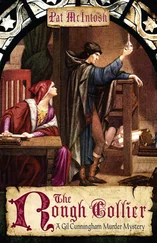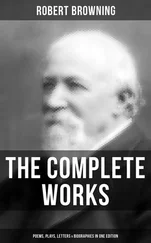That condition had been general for a good many years, with our mines as with practically all the others in the district. And there was no reason to think it would not continue indefinitely, as, in fact, it has with many of the mines in that district.
But from much cogitation, there one day dawned upon us an idea so obvious you will wonder why we did not think of it first thing. It was this: We had an unusually good grade of gas coal and a splendid coke.
There must be certain purposes for which that coal and that coke would produce far better results than any other made. If we could find these purposes, the businesses that needed coal and coke for them would cheerfully pay any reasonable premium for our particular product, and not only would we make more money, but we would cease to be dependent upon the whims of the brokers and would be sure of a regular volume of orders through good times and bad.
So we started experimenting, and found that for gas-making purposes we had easily the best coal in the district. Figured on the basis of cubic feet of gas produced, to say nothing of the by-products, any gas company could well afford to pay from 25 to 33 percent more for our coal.
That was all we needed. From that moment, every gas company within a radius of several hundred miles was our target. We disregarded the usual "per ton" prices to a great extent, centering our whole argument upon how many cubic feet of gas they got from each pound of coal, and what that gas cost them, including the delivered price of their coal.
How much are you paying per cubic foot for your gas? (was the basis of our letters). If we can show you how to cut the cost by a fourth, are you interested enough to prove it? The Blank Gas Company of Cincinnati has cut its costs by more than that, and here are the figures as given in a letter from their Superintendent. (Here we quoted exact figures and costs). The Bank Company of Indianapolis and (here we mentioned four or five other companies well and favorably known to the trade) have had similar experiences. We'll be glad to send you the exact figures from each if you will take the time to read them.
But better than any figures from other plants is this chance to write new figures of your own in your plant. Send the enclosed card, without money. On receipt of it, we will ship you a carload of Powellton screened gas coal, our regular standard quality.
Test it. Try it any way you wish. At the end of your tests, figure how much gas you get per pound of coal, and what that gas cost you! If you don't find that the Powellton Coal has saved you at least 25% on your cost, then that carload we send you won't cost you one cent. But if you do see where you can save from 25 to 33% of the cost of your gas, then you are to give us your contract for all the gas coal you use for the next year, at a price of $1.25 per ton f.o.b. Powellton, W.Va. Remember, no saving—no cost. But if we save you 25%, we get your contract. Is it a go?
I knew none of the rules of letter-writing. I could not have told you the difference between a clincher and a monkey wrench. But was bubbling over with enthusiasm for our idea, and that enthusiasm must have permeated our letters, for we got so many orders from gas companies, it kept us pumping to fill them all. And what was more to the point, they stuck. When I left Powellton, we still had on our books nearly every gas company we had ever put there.
One would stray away now and then, of course, lured by the sire song of a bargain. When that happened, we said nothing—just got a few average samples of the other man's coal and sent them, wit samples of ours, to a laboratory for comparative test. When the reports came back, we carried them out in figures of the cost of the coal and the final cost of the gas per cubic foot and sent the result without comment to the superintendent or other responsible executive of the gas company. In most cases the business was soon on our books again.
The coal problem solved, we set about finding a similar solution of the coke question, for the gas companies preferred screened coal, which meant that all the dust coal or slack was left us for cooking purposes.
We had made frequent analysis of our coke, of course, and knew that it was unusually low in sulphur, phosphorus and ash. So we set out to see which type of foundryman considered these qualities most valuable.
We soon learned that to the maker of steel rails, phosphorus was anathema, so we had little difficulty in persuading the Ashland Steel Company that a coke as low in Phosphorus as ours was easily worth 25 cts. more a ton than any other they could buy. 25 cts. a ton doesn’t sound like much, but when you multiply it by sixty to ninety tons a day, which was what the Ashland Steel required, it soon runs into money.
That was a good start so, much encouraged, we looked around for others. And in the makers of stoves and ranges we found possible customers who were quite as particular about sulphur as the Steel Company had been about phosphorus. In thin castings like those needed in stoves and ranges, sulphur means bubbles and cracks, and costs more money than any saving in price can possibly make up for.
But stove founders were, for the most part, located pretty far away from us, and other good cokes just about as low as ours in sulphur content were as readily available to them. To get their business on other than a price basis, we had to find some better argument than low sulphur content.
We worked on that for quite some time, talked to different founders to get a line on their problems, studied numerous books on the subject and finally stumbled on the answer almost by accident.
It happened that we had been figuring on a big contract with the Bucks Stove and Range Company of St. Louis. They were one of the most efficiently run concerns in the business, and they wanted the best, regardless of what it cost. So before placing their contract, they bought a carload of coke from each of half a dozen concerns whose analysis and claims seemed to indicate that they were in the running.
We had shipped them a carload and intended to run out to St. Louis in order to be on the spot when the contract was awarded, so that if it seemed that a last-minute reduction of 10 or 15 cts. a ton would turn the scales in our favor, we could throw it in. When lo and behold, without notice of any kind, in came the contract by mail at the price we had originally quoted!
To say that we were pleasantly surprised was putting it mildly. But we didn’t let either our pleasure or our surprise get in the way of the fact that here was probably the answer to our problem. If our coke stood out so well in a comparative test that we had landed the Bucks order without effort, in the face of the best cokes and the best salesmen that the Connellsville could show, then there must be something unusual about our coke that every other stove founder ought to know. And we lost no time in setting out for St. Louis to learn what it was.
And here is what we found: Its high carbon content and low ash gave Powellton Coke a heating power that would melt an unusual amount of iron and a structure that supported a phenomenal weight, with the result that where a good coke did well to melt eight or nine tons of iron to one of coke, ours melted as high as fifteen tons of iron to one of coke! Figuring the price of the coke at $7 a ton delivered, it cost the Bucks Stove and Range Company 80 to 90 cts. to melt a ton of iron with ordinary coke, whereas with Powellton Coke it cost them only 47 cts.! Can you wonder that they gave us the order without urging or bargaining?
Our problem was solved, and, as is often the case, through no skill of ours. The Lord had been good to us in the kind of coal he gave us, and instead of patting ourselves on the back, we should have been kicked for not cashing in sooner on our products' peculiar advantages.
Читать дальше











